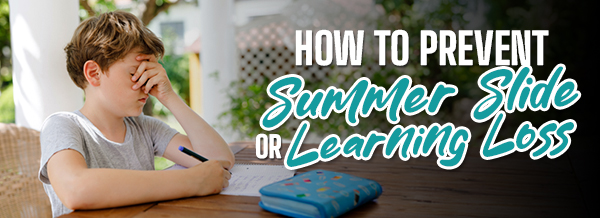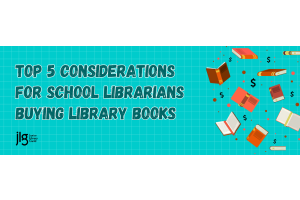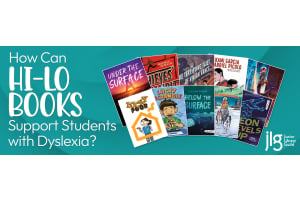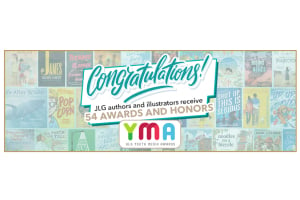How to Prevent “Summer Slide” or Learning Loss


Did you know that there is a whole week dedicated to amplifying the importance of summer learning for students? This July 15-19, we observe National Summer Learning Week to remind us of the vital role that learning in the summer has on the overall academic success and achievement of young learners. The concept of summer learning loss has been studied since 1996, and with the exasperated learning disruptions from the Covid-19 pandemic still looming over students, it’s time to come together to plan effective summer instruction for our next generation of learners.
What is the Summer Slide?
The summer slide is the loss of skills or knowledge acquired over the school year due to a pause in learning during summer break. A study from the ERIC Institute of Education Sciences titled “Summer Learning Loss: The Problem and Some Solutions”, states that summer break leads to students forgetting school instruction and therefore “requires a significant amount of review of material when students return to school in the fall”. Thus, instead of learning new information and progressing through coursework, students often must spend valuable time and energy relearning content. A study from Northwest Evaluation Association shows that elementary students lost, on average, about 20% of their school-year gains in reading during summer break. With standardized test results at the forefront of their curriculum, this approach does not bode well for high test scores or overall academic achievement for students.
How can Librarians Help Prevent Summer Learning Loss?
These sobering statistics illustrate the threat that young learners face, but never fear, important work is being done to combat learning loss—and you can be a part of the positive change. Numerous organizations, educators, and family members of students are working hard to make sure children do not regress in their studies by instituting year-round learning with—you guessed it—books that capture reader’s interests. If you’re a librarian dedicated to helping students’ academic performance, check out these three ways that your library can make a positive impact this summer.
1. Encourage readers to participate in summer reading programs.
To help combat summer slide, The United States Department of Education suggests that readers take a trip to their local library (do you know any good libraries?) While your readers are browsing for new titles, suggest that they participate in your library’s summer reading program. Whether your library is following the Collaborative Summer Library Program theme or implementing your own unique program, these events motivate students to read and learn (and win prizes!) Here at JLG, our mission is to help young learners foster a lifelong love for reading, and according to the National Assessment of Educational Progress , its paying off: students who perform higher on tests report more frequently reading for fun. The answer is clear, we need to get more readers to the library in the summer!
2. Organize and distribute family-friendly resources.
The Biden-Harris Administration understands the value that continuous learning brings, and in their Improving Student Achievement Agenda for 2024, one of their main goals is to increase summer learning by expanding educational access to all students and communities through the Engage Every Student Initiative. In addition, other organizations like the National Summer Learning Association work hard to provide families and communities with learning resources and programs to combat summer learning loss while keeping kids safe and healthy, and INFOhio (Ohio’s Prel-12 digital library) offers a yearly summer challenge to “accelerate learning with fun activities”.
Consider these additional pages when directing reading patrons and their families to resources:
- Reading Rockets
- Khan Academy
- National Education Association
- National Parent Teacher Association
- Kids Read Now
- United Way
3. Recommend high-interest books for reluctant readers.
It may be difficult to motivate reluctant or struggling readers to read for fun throughout the summertime, so taking care to stock your shelves with high-interest titles is crucial. High interest titles include captivating or relatable stories, simple vocabulary, and sometimes a lower reading level. This category of books is known as High/Low or Hi/Lo which means high interest and low readability. Hi/Lo books help keep readers engaged in the story while they practice critical reading skills.
JLG offers the following high-interest categories for students and reading patrons k-12:
Elementary Categories
Middle Categories
High Categories
Conclusion
Young learners deserve the chance to succeed in their academics year-round, and with a little help from summer reading programs, take-home resources, and captivating titles, they can do just that. If your library needs additional resources or award-winning titles that are curated specially for reluctant readers, check out our category descriptions or schedule a call to learn more about our special summer offerings. Let’s help foster a love of reading and get students back on track—together!









